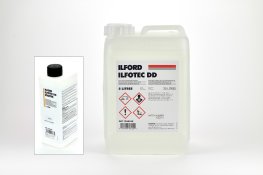So I've decided to give D-23 a go for a while. I've not had highlights like I get with D-23 since I was using PMK regularly.
I could use it undiluted. Mixing up to make 500ml each time but I'd like to try it 1:1 but have a few questions.
The formula I'm using is from the Cookbook:
Water 750ml
Metol 7.5g
Sulphite 100g
WTM 1000ml
I've been halving the above:
Water 375ml
Metol 3.75g
Sulphite 50g
WTM 500ml
If I wanted to do 1:1 would I halve again?
Water 188ml
Metol 1.9g
Sulphite 25g
WTM 250ml which I would then add to 250ml water to make 500ml working.
Would there be enough Metal for a roll of film or should I just mix up 500ml stock and add it to 500ml water?
If I wanted to try replenishment where would I start? Would I only replenish stock or could I replenish 1:1? How would I replenish?
I could use it undiluted. Mixing up to make 500ml each time but I'd like to try it 1:1 but have a few questions.
The formula I'm using is from the Cookbook:
Water 750ml
Metol 7.5g
Sulphite 100g
WTM 1000ml
I've been halving the above:
Water 375ml
Metol 3.75g
Sulphite 50g
WTM 500ml
If I wanted to do 1:1 would I halve again?
Water 188ml
Metol 1.9g
Sulphite 25g
WTM 250ml which I would then add to 250ml water to make 500ml working.
Would there be enough Metal for a roll of film or should I just mix up 500ml stock and add it to 500ml water?
If I wanted to try replenishment where would I start? Would I only replenish stock or could I replenish 1:1? How would I replenish?












